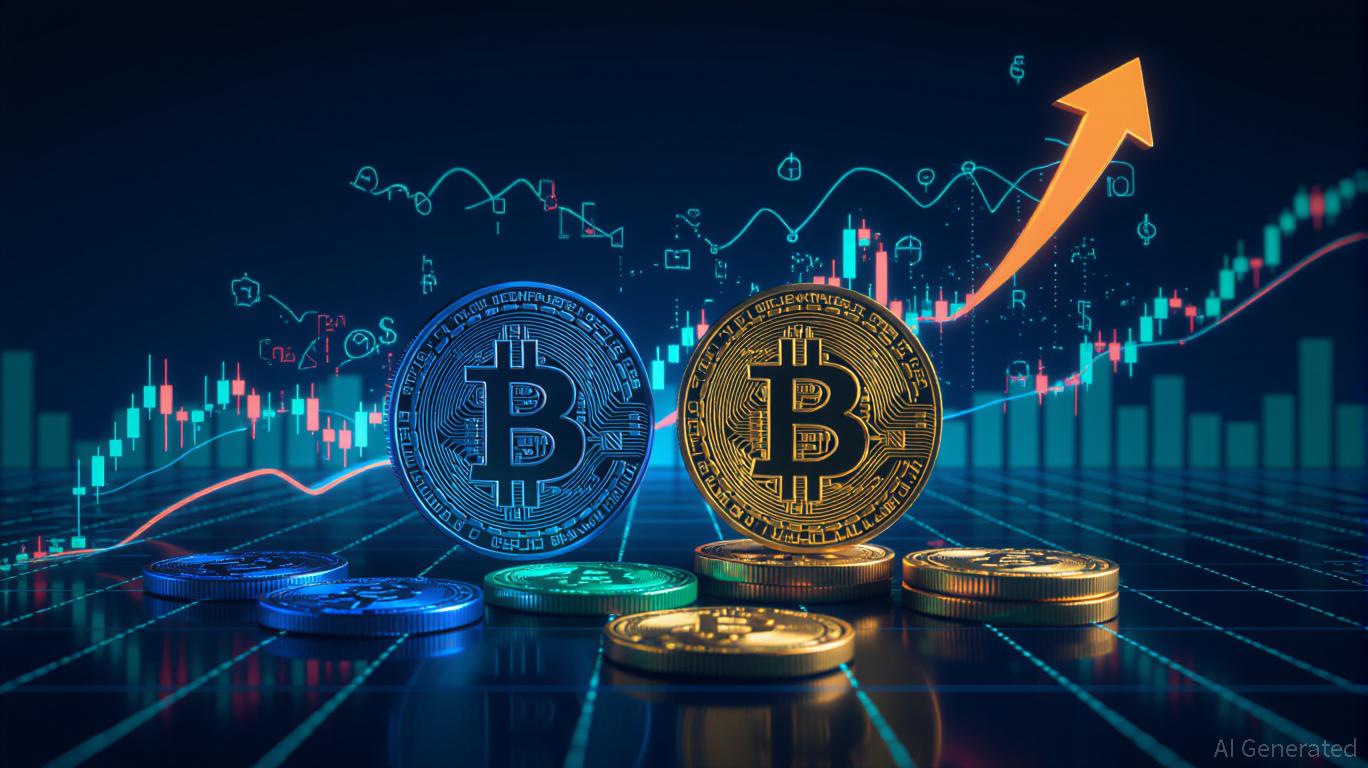The Increasing Importance of Stablecoins as Strategic Assets Amidst Crypto Market Volatility
- Institutional investors use stablecoins like USDC and BUSD to balance crypto portfolio risk and liquidity. - Allocating 5-10% to stablecoins enables yield generation via DeFi while mitigating volatility from assets like Bitcoin . - Mathematical models show stablecoins reduce portfolio beta, acting as near-risk-free assets during crypto market turbulence. - March 2023 depegging events exposed stablecoin vulnerabilities, highlighting risks tied to collateralization and issuer credibility. - As crypto marke
Stablecoins as a Portfolio Allocation Tool
Within crypto portfolios, stablecoins are increasingly regarded as equivalents to cash holdings.
In addition, stablecoins open up opportunities to earn yields through lending services and DeFi platforms. By placing USDC or BUSD into liquidity pools or staking them, investors can

Using Stablecoins to Hedge Against Volatility
The benefits of stablecoins go beyond just providing liquidity.
Take, for example, periods of extreme market stress—like the U.S. banking crisis in March 2023—when
Changing Market Trends and the Value of Diversification
As the digital asset market evolves, its behavior increasingly resembles that of traditional stock markets.
This stabilizing function is further supported by the expanding role of stablecoins in the global financial ecosystem.
Potential Risks and Key Considerations
Despite their strengths, stablecoins also come with certain risks.
Conclusion: Strategic Importance in Volatile Markets
USDC and BUSD are valuable for their ability to solve two major challenges in crypto investing: managing liquidity and controlling volatility. While not without flaws, their growing role in institutional portfolios reflects a more advanced market that requires both creativity and caution. For those navigating the uncertainties of 2025, stablecoins offer a crucial link between the high-risk world of crypto and the steadiness of traditional finance.
Disclaimer: The content of this article solely reflects the author's opinion and does not represent the platform in any capacity. This article is not intended to serve as a reference for making investment decisions.
You may also like
Solana News Update: Mainstream Investors Gain Approved Altcoin Exposure Through Franklin's Solana ETF
- Franklin Templeton files final paperwork for its Solana spot ETF (SOEZ), signaling imminent NYSE Arca listing after SEC Form 8-A submission. - The 0.19% fee structure includes waived sponsor costs on first $5B until 2026, building on its XRP ETF's $164M debut and broader altcoin ETF expansion strategy. - Regulatory clarity post-2025 commodity ETF guidelines has accelerated Solana ETF growth, with six U.S. funds now active and Bitwise's BSOL leading with $478M AUM. - The ETF offers direct SOL token exposu

"Chainlink's Influence in Crypto Compared to Interlink's Challenges: Similar Tickers Cause Investor Hesitation"
- Chainlink (LINK) is highlighted as critical infrastructure for blockchain adoption, enabling cross-chain interactions and RWA tokenization via modular middleware. - Grayscale emphasizes its role in bridging traditional finance with decentralized systems, driving LINK's market cap growth to top non-L1 crypto asset status. - A 2025 cross-chain DvP pilot with JPMorgan and Ondo Finance demonstrates Chainlink's potential to scale institutional-grade tokenized asset settlements. - Ticker confusion with Interli
BNB News Update: Meme Coin Traders Steer Through Regulatory Ambiguity to Lock in Profits
- VanEck's proposed BNB ETF highlights regulatory challenges in meme coin investments, with staking language removed due to SEC uncertainties. - The filing underscores the need for investors to align strategies with evolving SEC guidelines on token classification and protocol staking. - A parallel Solana ETF with staking features demonstrates diversified risk management, balancing innovation with caution in volatile crypto markets. - SEC's ambiguous stance on staking activities creates regulatory gray area
The Growth of Social Impact Investing: Insights from Public Interest Legal Research and New Developments in Emerging Markets
- Legal professionals are reshaping ESG investing through policy advocacy and litigation, balancing fiduciary duties with sustainability goals in markets like the U.S. and EU. - Emerging markets like Morocco and China adopt tailored ESG frameworks, driven by regulatory mandates and legal scholarship emphasizing transparency and accountability. - Anti-ESG political pushback and greenwashing risks persist, but tools like the Sustainability ROI Workbook demonstrate ESG's financial benefits and investor demand
